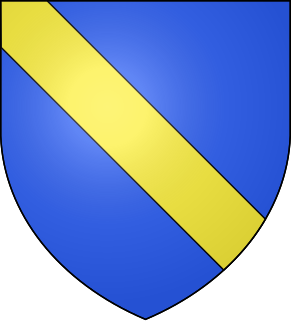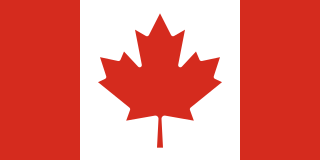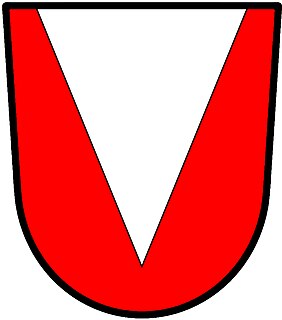 W
WIn heraldry, an ordinary is a simple geometrical figure, bounded by straight lines and running from side to side or top to bottom of the shield. There are also some geometric charges known as subordinaries, which have been given lesser status by some heraldic writers, though most have been in use as long as the traditional ordinaries. Diminutives of ordinaries and some subordinaries are charges of the same shape, though thinner. Most of the ordinaries are theoretically said to occupy one-third of the shield; but this is rarely observed in practice, except when the ordinary is the only charge.
 W
WIn heraldry, a bar is an ordinary consisting of a horizontal band across the shield. If only one bar appears across the middle of the shield, it is termed a fess; if two or more appear, they can only be called bars. Calling the bar a diminutive of the fess is inaccurate, however, because two bars may each be no smaller than a fess. Like the fess, bars too may bear complex lines. The diminutive form of the bar is the barrulet, though these frequently appear in pairs, the pair termed a "bar gemel" rather than "two barrulets".
 W
WIn heraldry, a bend is a band or strap running from the upper dexter corner of the shield to the lower sinister. Authorities differ as to how much of the field it should cover, ranging from one-fifth up to one-third. The supposed rule that a bend should occupy a maximum of one-third of the field appears to exclude the possibility of three bends being shown together, but contrary examples exist. Outside heraldry, the term "bend sinister" is sometimes used to imply illegitimacy, though it is almost never true that a bend sinister has this significance, and a "bar sinister" cannot, by its nature, exist.
 W
WIn heraldry, a bordure is a band of contrasting tincture forming a border around the edge of a shield, traditionally one-sixth as wide as the shield itself. It is sometimes reckoned as an ordinary and sometimes as a subordinary.
 W
WIn heraldry and vexillology, a Canadian pale is a centre band of a vertical triband flag that covers half the length of a flag, rather than a third as in most triband designs. This allows more space to display a central image. The name was suggested by Sir Conrad Swan, Rouge Dragon Pursuivant, and first used by Queen Elizabeth II as Queen of Canada proclaiming the new Canadian flag on 28 January 1965. Properly, the term should only apply to Canadian flags, though in general use the term is also used to describe non-Canadian flags that have similar proportions.
 W
WIn heraldry, a canton is a charge placed upon a shield. It is, by default a square in the upper dexter corner, but if in the sinister corner is blazoned a canton sinister. A canton is classed by some heraldic writers as one of the honorable ordinaries; but, strictly speaking, it is a diminutive of the quarter, being two-thirds the area of that ordinary. However, in the armorial roll of Henry III, the quarter appears in several coats which in later rolls are blazoned as cantons. The canton, like the quarter, appears in early arms, and is always shown with straight lines.
 W
WA chevron is a V-shaped mark, often inverted. The word is usually used in reference to a kind of fret in architecture, or to a badge or insignia used in military or police uniforms to indicate rank or length of service, or in heraldry and the designs of flags.
 W
WIn heraldic blazon, a chief is a charge on a coat of arms that takes the form of a band running horizontally across the top edge of the shield. Writers disagree in how much of the shield's surface is to be covered by the chief, ranging from one-fourth to one-third. The former is more likely if the chief is uncharged, that is, if it does not have other objects placed on it. If charged, the chief is typically wider to allow room for the objects drawn there.
 W
WIn heraldry, a fess or fesse is a charge on a coat of arms that takes the form of a band running horizontally across the centre of the shield. Writers disagree in how much of the shield's surface is to be covered by a fess or other ordinary, ranging from one-fifth to one-third. The Oxford Guide to Heraldry states that earlier writers including Leigh, Holme, and Guillim favour one-third, while later writers such as Edmondson favour one-fifth "on the grounds that a bend, pale, or chevron occupying one-third of the field makes the coat look clumsy and disagreeable." A fess is likely to be shown narrower if it is uncharged, that is, if it does not have other charges placed on it, and/or if it is to be shown with charges above and below it; and shown wider if charged. The fess or bar, termed fasce in French heraldry, should not be confused with fasces.
 W
WIn heraldry, a flaunch are among the ordinaries or subordinaries, consisting of two arcs of circles protruding into the field from the sides of the shield. The flaunch is never borne singly.
 W
WIn heraldry, an orle is a subordinary consisting of a narrow band occupying the inward half of where a bordure would be, following the exact outline of the shield but within it, showing the field between the outer edge of the orle and the edge of the shield.
 W
WA pale is a term used in heraldic blazon and vexillology to describe a charge on a coat of arms, that takes the form of a band running vertically down the centre of the shield. Writers broadly agree that the width of the pale ranges from about one-fifth to about one-third of the width of the shield, but this width is not fixed. A narrow pale is more likely if it is uncharged, that is, if it does not have other objects placed on it. If charged, the pale is typically wider to allow room for the objects drawn there.
 W
WA pall in heraldry and vexillology is a Y-shaped charge, normally having its arms in the three corners of the shield. An example of a pall placed horizontally (fesswise) is the green portion of the South African national flag.
 W
WIn heraldry, a pile is a charge usually counted as one of the ordinaries. It consists of a wedge emerging from the upper edge of the shield and converging to a point near the base. If it touches the base, it is blazoned throughout.
 W
WIn heraldry, an ordinary is described as quadrate when it has a square central boss.
 W
WA saltire, also called Saint Andrew's Cross or the crux decussata, is a heraldic symbol in the form of a diagonal cross, like the shape of the letter X in Roman type. The word comes from the Middle French sautoir, Medieval Latin saltatoria ("stirrup").
 W
WIn heraldry and vexillology, a Spanish fess is a term occasionally used to describe the central horizontal stripe of a tricolour or triband flag that is twice the width of the stripes on either side of it.
 W
WIn heraldry, an ordinary is a simple geometrical figure, bounded by straight lines and running from side to side or top to bottom of the shield. There are also some geometric charges known as subordinaries, which have been given lesser status by some heraldic writers, though most have been in use as long as the traditional ordinaries. Diminutives of ordinaries and some subordinaries are charges of the same shape, though thinner. Most of the ordinaries are theoretically said to occupy one-third of the shield; but this is rarely observed in practice, except when the ordinary is the only charge.
 W
WIn heraldry, variations of the field are any of a number of ways that a field may be covered with a pattern, rather than a flat tincture or a simple division of the field.